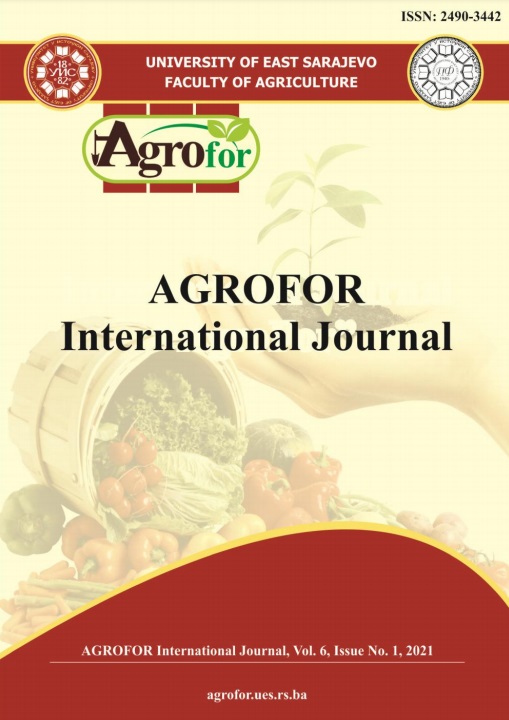SMALLHOLDER FARMERS’ RESOURCE ALLOCATION DECISIONS IN A MAIZE-FARMING SYSTEM UNDER CLIMATE RISKS IN MALAWI
DOI:
https://doi.org/10.7251/AGRENG2101086MAbstract
Using household data from Lilongwe districts, along with crop phenology,
agronomic management and climatic data from Chitedze Research Station, the
Target-MOTAD and DSSAT-CSM models examined the resource allocation
decisions of smallholder farmers in maize farming systems under climate risk in
Malawi. Specific aims were to evaluate the ability of DSSAT to predict and collate
DTM and non-DTM yields under climatic risk and to use a bio-economic
procedure developed using DSSAT and Target-MOTAD to explore the impact of
climatic risk on allocation of resources to DTM and non-DTM production. The
paper argues that higher average yields observed from DTM varieties make it the
most optimal maize production plan, in maximizing household incomes, food
security, and minimizing deviations from the mean while meeting the set target
incomes of farmers compared to non-DTM varieties. The multidisciplinary nature
of this paper has contributed to the body of research by providing a powerful
analytical procedure of modelling farmers’ resource allocation decisions in maize
based farming systems in Malawi. This study necessitates the use of a combination
of biophysical and economic procedures when evaluating promising lines prior to
variety release in order to identify the high yielding variety that will continuously
bring sustained profits to the farmers amidst climate change.

